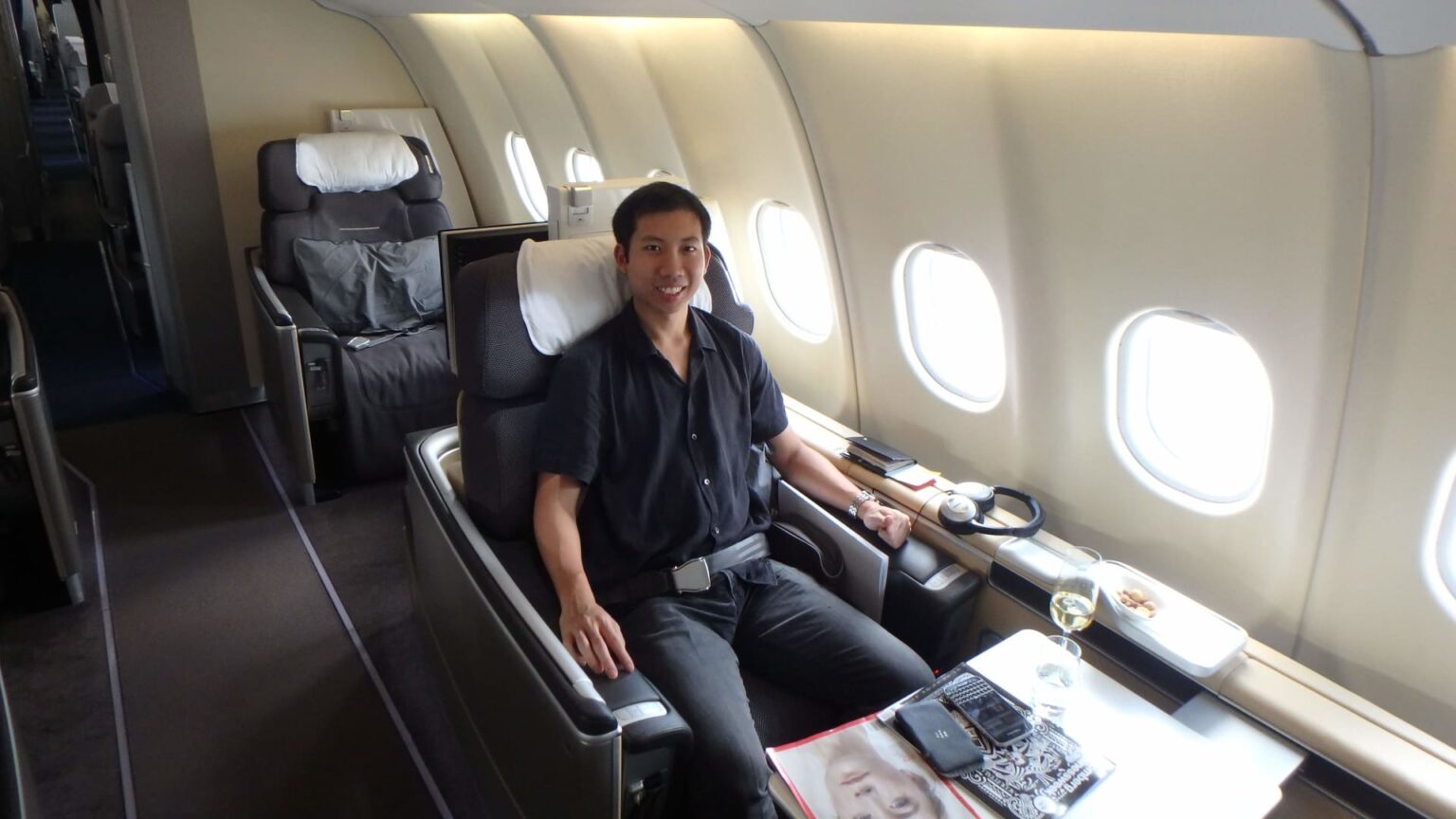For most travelers, flying in business and first class, especially on international flights, is a once-in-a-lifetime opportunity.
A business class ticket can cost up to five times more than an economy ticket on Singapore Airlines — and a whopping 13 times more for a first-class one.
As a result, these cabins are often booked by big-time business travelers, or the well heeled, including — to borrow a movie title — crazy rich Asians.
A Singapore-to-London economy class ticket on Singapore’s flag carrier, booked about six months in advance, costs 1,700 Singapore dollars ($1,303.68) for a round trip. A business class ticket jumps to SG$6,300, and a first-class ticket just over SG$13,000.
Admittedly, the difference can be smaller on shorter-haul flights. For example, a flight with the same conditions from Singapore to Tokyo Haneda airport can cost about SG$1,300 on economy class, just over SG$4,200 on business and SG$7,600 in first class.
However, Singaporean Aaron Wong, a former management consultant who left his job in 2015 to set up the travel website The MileLion, said he flies about eight to nine business and first-class flights per year.
Some are regional flights, others are long-haul ones. But the best part? He flies almost for free.
A ‘best miles card?’
Wong said the key is to maximize points earned on his credit card expenditures, which are then converted to airline miles. However, it’s not as simple as just picking up any mile-earning credit card and spending a bunch of money, he said.
First, “there is no such thing as the best card,” he said. “It depends.”
Instead, Wong said so-called “miles chasers” should sign up for cards that match their spending habits.
He recommends having several credit cards that award “bonus” miles, covering a person’s main spending categories. One card may grant bonus miles for online purchases; a different card may do so for dining. Others may award extra miles for groceries or transportation.
That can make a huge difference, he said, because a typical “bonus” rate in Singapore is 4 miles per dollar spent, more than the 1.2-1.4 miles on other credit cards.
“It’s kind of like different tools in the toolbox, right? You wouldn’t use a beer opener for wine. So if people wanted just one card … It’s kind of like trying to use a beer bottle opener to open every single kind of beverage out there.”
Wong said a $30,000 expenditure on a credit card earning 1.4 miles per dollar would earn one about 45,000 miles on Singapore Airlines — enough for a round-trip economy class ticket to Perth.
However, if one were to put the same $30,000 on several cards that give “bonus” miles, one could earn 120,000 Singapore Airlines miles, which could net a round trip to Cape Town in business class.
If someone paid for a meal with a card that earns 1.3 miles per dollar rather than one that earns 4 miles per dollar, “You’ve left 2.7 miles on the table, right? That’s free value that you didn’t take,” he said.
The ‘nitty gritty’
Wong admitted that the miles game can be “nitty gritty,” unlike holding a cashback card, which gives credit card holders money back on a percentage of their spending.
Miles cards users need to keep track of which cards garners the most miles, as well as understand the fine print: bonus categories, exclusions, and factors such as points pooling from different cards from the same bank.
For example, in Singapore, points earned on DBS credit cards can be combined, but credit cards from Citibank Singapore don’t work that way.
Some credit card points never expire, while some have a validity period. Some cards automatically convert spending to miles, while some give bank points, which must be redeemed for miles.
“I know a lot of people get a bit intimidated,” he said, adding many people think you need at least 10 credit cards to maximize points. “Truth be told, three cards, maybe four will be more than sufficient for most people, unless you’re spending really big amounts every year.”
Most cards that give bonus miles in Singapore have a cap on the amount of spending that will accrue bonus miles. For example, Citi’s Rewards card in Singapore gives only 4 miles per dollar on the first $1,000 of monthly spend.
But despite all those hoops, Wong said it’s worth it: “The rewards are good. I think that’s why people are willing to commit that amount of time [and] mental capacity.”
He added that he would not spend SG$6,000-$7,000 to fly in business class. “But because miles exist, I don’t have to pay … to unlock that kind of experience.”
To aspiring “miles chasers,” Wong advises not spending more simply to acquire more miles. “For some people, they can try and justify spending more to get more rewards, but I don’t advocate that,” he said.
Instead, his view is that miles are simply rewards a person earns on what they were going to buy in the first place — a reward, he said, that provides a “five-star experience on a one-star budget.”
Read the full article here

